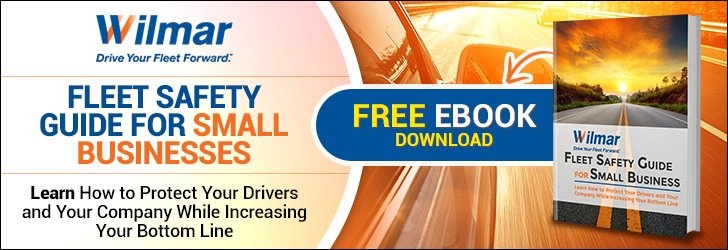
If you are managing a fleet, then fleet safety is one of your primary concerns - you need to protect drivers, passengers, and cargo as well as your own bottom line. The roads are more dangerous than they ever were - 2016 was the deadliest year on American roads in nearly a decade, thanks to lower gas prices and an increase in distracted driving.
Keeping your fleet safe means dealing with the various issues that come up - and often using advances in technology to protect your drivers. Here are four important advances.
1. Cell phone blocking
In 2015, 3,477 people were killed in accidents involving distracted driving, according to the NHTSA. The most worrisome distraction right now is texting while driving, which takes your eyes off the road for at least five seconds.
Talking on a cell phone is another problem. Both are illegal in most places. In-cab cell phone blocking literally prevents your driver from sending or receiving calls or texts in the cab.
Recent advances have made it much smarter and more usable. Blocking technology can now be set to exclude hands-free devices, to activate only when the vehicle is in motion and even to prevent use only by the driver and not any passengers. Combined with a hands-free device, cell phone blocking could save a lot of lives.
2. Telematics
This means data being sent back from your vehicles to dispatch, in real time. This allows you to track driver behavior - are they braking too suddenly? Are they distracted in the cab? Accelerating rapidly too often? Leaving their lane?
These insights can then be used to design refresher training that addresses the problems your drivers are actually having, rather than being some kind of general plan. Telematics can also improve safety by tracking the location of vehicles and making it easier to get roadside assistance quickly.
3. Cameras
Cameras can serve all kinds of purposes. In-cab video cameras are more and more common these days. These cameras can detect if a driver is falling asleep and can record what is happening in the cab if another safety system, such as lane departure, is activated.
This, again, allows a company to direct training where it needs to be, and talk to individual drivers about their issues. Most in-cab cameras have an accelerometer to detect hard braking and activate recording. The camera also records what is in front of the vehicle, so a record is kept of why the braking occurred. (For example, a deer running out in front of the truck would show). In fact, the cameras can also allow a driver to be recognized for good driving to avoid an accident.
They can be installed in older trucks easily and relatively cheaply. Backup cameras are also standard on most vehicles now, making backing up to a loading dock much easier for drivers, enhancing not only safety but productivity.
4. Smart vehicle technology
We're a good way from self-driving trucks, but smart vehicle technology can help support a driver and keep them and everyone else on the road safe. Collision mitigation activates the brakes if the driver doesn't when a collision appears to be imminent.
Tire pressure monitoring can reduce the risk of a blowout. Blind spot detection is particularly important for large trucks that have equally large blind spots.
In the fairly near future, highly automated vehicles will be able to take over from the driver completely on long highway stretches, meaning the driver will become the backup - much like the pilot on a modern plane. Not only does this improve safety, but it may also help with driver recruitment and retention.
So, if you're concerned about fleet safety - then keep up on the latest technology and see what you can leverage to improve safety and productivity.
And if you are looking for help and assistance managing your fleet, contact Wilmar, Inc. for fleet management including maintenance, repair, and advice on the safety technology you need for your fleet.







